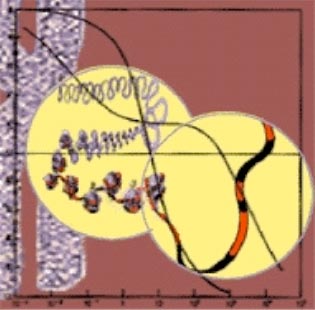Concept 31 Some DNA does not encode protein.

In most cases when DNA is extracted from living cells, the proteins (including histones) are dissolved away. This results in long strands of naked DNA, which retain their genetic information. So it is useful to visualize a chromosome as a continuous strand of DNA. Arrayed along the DNA strand are the genes, specific regions whose sequences carry the genetic code for making specific proteins.
The genes of bacteria are tightly packed together; virtually all the DNA encodes proteins. However, experiments done in the 1960s, showed that a large proportion of eukaryotic DNA is composed of repeated sequences that do not encode proteins. Long non-coding sequences — or intergenic regions — separate relatively infrequent "islands" of genes. Research in the 1970s showed that numerous non-coding sequences — introns — are also found within genes, interrupting the protein-coding regions, or exons. It is estimated that only about five percent of human DNA encodes protein.
 DNA is packaged in a chromosome.
DNA is packaged in a chromosome. Higher cells incorporate an ancient chromosome.
Higher cells incorporate an ancient chromosome. Some DNA does not encode protein.
Some DNA does not encode protein. Some DNA can jump.
Some DNA can jump. Genes can be turned on and off.
Genes can be turned on and off. Genes can be moved between species.
Genes can be moved between species. DNA responds to signals from outside the cell.
DNA responds to signals from outside the cell. Different genes are active in different kinds of cells.
Different genes are active in different kinds of cells. Master genes control basic body plans.
Master genes control basic body plans. Development balances cell growth and death.
Development balances cell growth and death. A genome is an entire set of genes.
A genome is an entire set of genes. Living things share common genes.
Living things share common genes. DNA is only the beginning for understanding the human genome.
DNA is only the beginning for understanding the human genome.